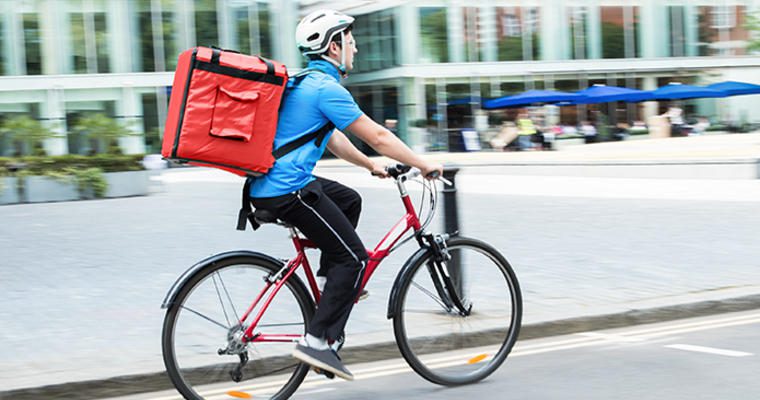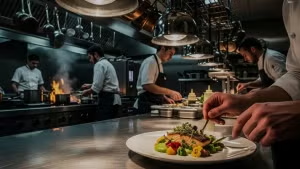Restaurant delivery posted sizable gains during the past five years, according to The NPD Group. The 20 percent increase in delivery sales and 10 percent gain in delivery foodservice visits were supported largely by the growth of digital ordering, which now represents over half of all delivery visits.
Findings by this leading global information company are no flash-in-the-pan trend. In 2017, financial services firm Morgan Stanley projected delivery will account for 40 percent of all restaurant sales by 2020, and an even higher percentage in urban areas and among casual restaurants, where delivery is concentrated.
So why are so many chain and independent operators continuing to resist the call to offer delivery service?
Some are concerned their menu items won’t travel well. Others worry what it will do to their on-premise business. But for most, it’s economics—they don’t think the cost justifies the investment.
Where’s the profit?
Most operators entering this arena are teaming with third-party aggregators like Uber Eats GrubHub and other local delivery solutions in their cities. Restaurants pay these services fees of 17 to 30 percent of each order customers place through their digital platforms. That’s tough for an industry that works on razor-thin profit margins.
At least it’s tough under the industry’s traditional cost model, which involves determining fixed costs and variable costs. In a typical restaurant, fixed costs include such items as rent or mortgage, salaried payroll, insurance and licenses—money you have to spend every month, no matter what. Variable costs may include food, paper products and hourly payroll—things that fluctuate with business conditions.
Knowing these figures allows you to apply a formula to calculate a break-even point—basically, the amount of sales you need over a certain period to not lose money. Sales over and above that are profit.
This cost model works well to ascertain a restaurant’s financial performance and guide improvements in profitability. But it isn’t really suited to analyzing the addition of off-premise dining services through delivery.
That’s because off-premise dining throws some of the old assumptions about fixed costs out the window. Adding delivery doesn’t require you to pay more rent, more taxes or more license fees. Those are already baked into your restaurant’s profit and loss statement, and don’t have to be accounted for again.
A third-party delivery service also requires little or no front-of-the-house labor participation, so you can eliminate most or all of that cost from your analysis. Takeout may involve some front-of-the-house personnel, but nowhere near what is required for on-site consumption.
A new perspective
What this suggests is a new cost model for off-premise dining is needed, one that excludes many fixed costs and some variable costs. Even after adding the third-party delivery fee to the variable cost ledger, you may find your break-even point much lower than you imagined.
Here’s another way to look at it: food and labor represent about 65 percent of a typical four-walled restaurant’s expenditures; 35 percent goes to all other operating expenses. Off-premise dining increases the percentage of cost of goods sold (COGS)—because you’ll be selling more food—but it decreases the percentage of labor and other expenses. The lower labor and operating costs offset not only the higher food costs—but also the fees you pay to a third-party delivery service.
Another factor to consider: it’s becoming increasingly clear that delivery generates incremental sales. It doesn’t take business away from your restaurant, it adds business you wouldn’t otherwise capture on any given day. Making your menu available on third-party delivery apps may also broaden your reach.
And remember, delivery service vendors are in a competitive market. The “list price” a delivery service quotes does not have to be your final price—negotiate for the best deal possible.
Of course, there are risks that can’t be captured by a mathematical cost model. It’s up to you to ensure a delivery service can get the food to the customer in a timely or intact manner. Few, if any, delivery services are actually making money, so their longevity may be in question—and the last thing you want to do is stop offering delivery after customers get used to it.
Still, there’s no stopping consumer demand for in-home delivery. It may not be right for every restaurant, but it’s certainly worth looking at it through the lens of a new cost model that reconsiders fixed and variable cost assumptions. You may find the sales you need to make delivery profitable aren’t as prohibitive as you think.
Delivery Snapshot
- 86% of consumers use off-premise services at least once a month
- 33% of people are using off-premise services more than they did one year ago
- 60% of operators say delivery has generated incremental sales
Source: Technomic, 2018 Restaurant Leadership Conference











